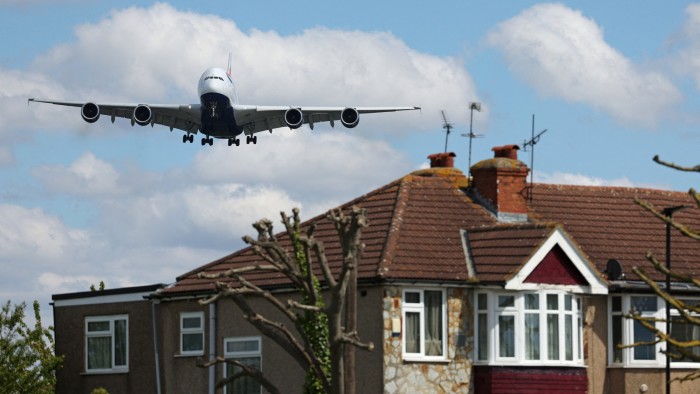Rising aviation emissions risk jeopardising the UK’s climate targets, independent government advisers have warned, with flights now contributing more greenhouse gas than the entire electricity supply sector.
In its annual assessment of the UK’s progress on its net zero emissions goals, the Climate Change Committee (CCC) said emissions from flights jumped by 9 per cent in 2024, while recognising progress had been made across many parts of the economy.
“If emissions from aviation continue to rise it could put the UK’s future [climate] targets at risk. This is something we need to watch,” said Emily Nurse, CCC head of net zero.
The sector’s emissions have rebounded to pre-pandemic levels, the report concluded. The most significant driver over recent decades was “rising demand for international flights, particularly leisure”.
In its first annual assessment since the Labour government was elected last July, the CCC called on ministers to develop a policy to ensure the industry “takes responsibility” for its carbon footprint.
The government has supported airport expansion in the UK as part of its plan to deliver growth, with chancellor Rachel Reeves earlier this year backing proposals for a third runway at Heathrow airport.
Alex Chapman, senior economist at the New Economics Foundation think-tank, said the report showed “the government urgently needs to get a grip on the aviation sector and its emissions”.
“Some really dangerous trends are emerging as a very small minority of ultra-frequent flyers travel longer distances more often than ever before, often in the luxury classes,” he said.
“And this is before all the proposed airport expansions have been realised.”
The CCC said the cost of decarbonising aviation and addressing non-CO₂ effects should be reflected in the cost to fly suggesting a strengthened UK emissions trading system (ETS) could be one option to deliver this.
New Economics Foundation research shared with the Financial Times found that flights to mid-haul destinations, such as Jeddah, Agadir and Enfidha had jumped this year.
The destinations are outside the UK’s ETS zone and therefore pay in effect zero carbon tax.
Under the UK ETS, airlines are required to monitor and pay for emissions from flying through a levy on certain flights, including those within the UK and to European Economic Area countries and Switzerland.
In the UK, aviation emissions stood at 38.4mn tonnes of carbon dioxide equivalent, compared with 30.6mn tonnes in the electricity supply sector, which has seen levels drop rapidly with the rollout of renewables. In 1990, aviation emissions were close to half their current levels.
Emissions from flights would need to start decreasing slowly over the rest of the decade if the UK is to meet its climate targets, the advisers said.
Britons who take at least three round trips a year account for just 10.5 per cent of the population, but are responsible for almost 57 per cent of the country’s aviation emissions, according to the Civil Aviation Authority.
While surface transport — cars and vans on the road — is the biggest contributor to UK greenhouse gas emissions, this is starting to fall as consumers switch to electric vehicles, the CCC said.
Overall emissions have dropped 50.4 per cent since 1990. The UK has a legally binding target to reach net zero emissions by 2050, as well as a 2030 target of 68 per cent.
The report said the 2030 target was “within reach, provided the government stays the course”, adding that it made some “bold policy decisions”, including removing planning barriers for renewable deployment.
But, it added, there had been “no clear progress” on tackling the UK’s electricity prices, which are among the highest in Europe.
“Given increasingly unstable geopolitics, it is also important to get off unreliable fossil fuels and on to homegrown, renewable energy as quickly as possible,” said Piers Forster, CCC interim chair.
Meanwhile, the current tax system needlessly raises the cost of cutting emissions, according to analysis published on Wednesday by the Institute for Fiscal Studies, which drew attention to the higher taxes levied on emissions from electricity, compared with those from gas.
This difference in tax treatment meant both households and businesses had “a clear incentive” to prioritise cutting electricity use, even if it would be cheaper, tax aside, to cut their use of gas, the IFS said.
Energy secretary Ed Miliband said the government had delivered “the most significant investment in clean homegrown power in history”.
“The only way to get bills down for good is by becoming a clean energy superpower and we continue to work tirelessly to deliver clean power for families and businesses,” he added.
